The launch of China’s third aircraft carrier on June 17 was an expected – actually slightly delayed, thanks to coronavirus lockdowns – step toward the aggressive Communist power challenging the ability of the United States and its NATO allies to project power across the seas.
China unambiguously seeks to challenge America’s carriers, but it still has a long way to go.
The new Chinese carrier was christened Fujian, the name of the Chinese province nearest Taiwan – a characteristically thuggish touch. In truth, the new carrier will probably be needed more in Japanese waters than the Strait of Taiwan, should Beijing decide to touch off a regional conflict by invading Taiwan.
China’s first carrier, the Liaoning, is an aging Russian ship purchased from Ukraine by a Chinese tourist company and towed to China in 1998. The original plan was to use Liaoning as a test bed and training platform, but the People’s Liberation Army Navy (PLAN) wound up loading her with planes, cobbling together an escort group, and sailing her around Taiwan and Japan to demonstrate Chinese sea power.
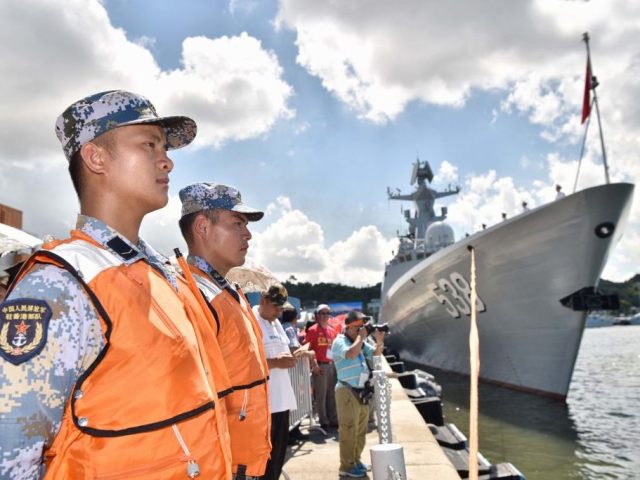
Soldiers of People’s Liberation Army (PLA) Hong Kong Garrison attend a departure ceremony of China’s first aircraft carrier, the Liaoning, in Hong Kong, July 11, 2017. (Xinhua/Wang Xi via Getty Images)
The second PLAN carrier, the Shandong, was launched in April 2017. The Shandong is much easier on the eyes than the Liaoning, and it includes some technological refinements, but it is essentially a locally-engineered copy of the venerable 1980s Russian design.
The PLAN decided Shandong’s advances were good enough to designate it as “Type 002,” a different class of ship than the Type 001 Liaoning. Chief among these improvements, as best foreign observers can tell, are improved radar systems, capacity for about eight more aircraft, and better interior organization that would help the carrier function more smoothly in combat.
The Fujian is a new design, much larger than the Type 001 and 002, and equipped with far more advanced systems. Its chief innovation is an electromagnetic aircraft launch system (EMALS) – in other words, a high-tech catapult that launches fighters and bombers off the deck.
The Liaoning and Shandong both use a “ski slope” ramp on the bow to get their planes aloft. This is doubtless very entertaining for the pilots, but much slower than the launches American carriers are capable of, and EMALS permits a carrier to launch larger and more heavily-armed aircraft. The highway to the danger zone is now open on Chinese carriers.
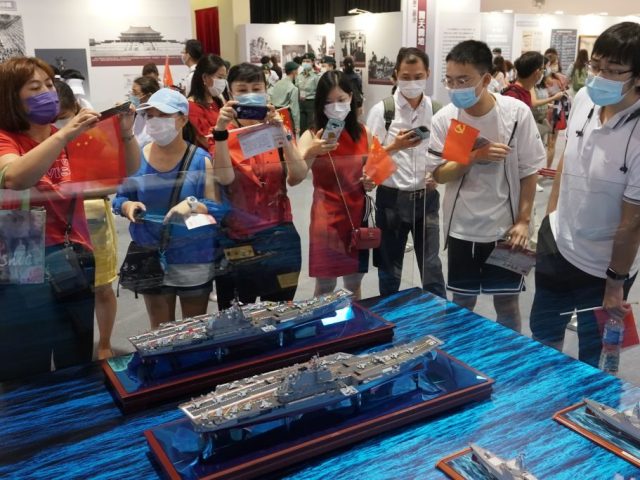
Citizens watch models of Shandong aircraft carrier and Liaoning aircraft carrier while visiting an exhibition on the “history and achievements” of the Communist Party of China (CPC) at Hong Kong Convention and Exhibition Centre on July 3, 2021 in Hong Kong (Zhang Wei/China News Service via Getty Images)
In fact, China appears to have skipped right past the Catapult Assisted Take Off But Arrested Recovery (CATOBAR) system used on all but the newest American carriers, which is powered by steam instead of the electromagnetic linear induction motors of EMALS. Electromagnetic catapults have several advantages, most importantly the ability to launch heavier planes more quickly than steam catapults.
Heavier planes mean more bombs and more fuel, greatly increasing the strike range and power of the carrier. It also means more flexibility – U.S. carriers can launch a wider variety of planes for different missions than the old Chinese carriers can. This affords the U.S. Navy a crucial advantage in reconnaissance and coordination planes, which are large and impractical to launch with the ski-slope system.
The two active classes of American carrier can carry much larger air wings than China’s Type 001 and 002 carriers. The Chinese platforms could handle about 40 planes, while the older U.S. Nimitz class carries 60, and the new Gerald R. Ford class has 75.
The Fujian is much closer to punching at America’s weight, earning the classification of “supercarrier” from naval analysts, and it is expected to carry early warning and control aircraft as U.S. carriers do. It still has a significantly narrower flight deck than the Gerald R. Ford class, so it might be a little slower at putting planes in the sky, especially since China is still racing to produce advanced fighters and bombers that could be launched from a carrier deck.
The biggest disadvantage for Fujian is that it lacks a nuclear power plant, which might not be a pivotal drawback as China’s potential future naval conflicts are closer to its shores than America’s. Reports have speculated that China’s next carrier, the Type 004, will be nuclear, giving the PLAN global power projection.
A more subtle disadvantage for China’s carriers, in general, is that they lack America’s expertise in deploying and protecting flattops as part of a strike group. U.S. Navy analysts who observed the Liaoning in action last year noticed the PLAN seemed uncomfortable with deploying support and protective ships around the carrier while it was conducting launch and recovery operations.
The Chinese were furious when the American guided-missile destroyer USS Mustin sauntered past the nervous PLAN escort flotilla, parked itself close enough to Liaoning to get a good view of its drills, and broke out the metaphorical popcorn. Putting a carrier in the water is one thing, but the U.S. Navy has decades of hard-earned experience at actually using them and protecting them.
With the launch of Fujian, China became the second-largest carrier power after the United States, which is currently operating 11 of the ships, including the next-generation Gerald R. Ford and John F. Kennedy. Some naval analysts believe the Ford class is bit too big, advanced, and expensive, so future plans may include smaller and faster carriers that have specialized missions.
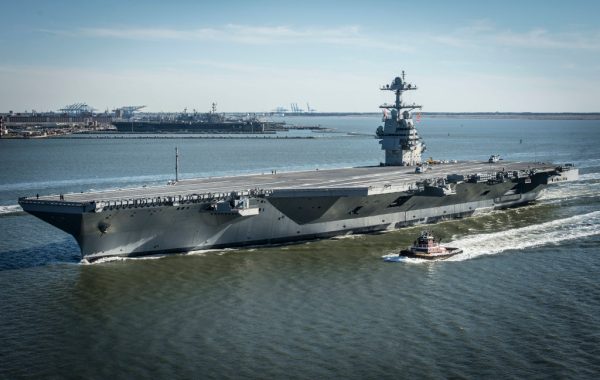
In this handout photo provided by the U.S. Navy, the future USS Gerald R. Ford (CVN 78) is seen underway on its own power for the first time on April 8, 2017 in Newport News, Virginia. The first-of-class ship — the first new U.S. aircraft carrier design in 40 years — will spend several days conducting builder’s sea trials, a comprehensive test of many of the ship’s key systems and technologies. (Mass Communication Specialist 2nd Class Ridge Leoni/U.S. Navy via Getty Images)
Italy and the United Kingdom are operating two aircraft carriers each, while the small number of other nations in the carrier club only have one each. Some navies also have a number of smaller “helo” carriers and the biggest of them might be upgradable to launch jets.
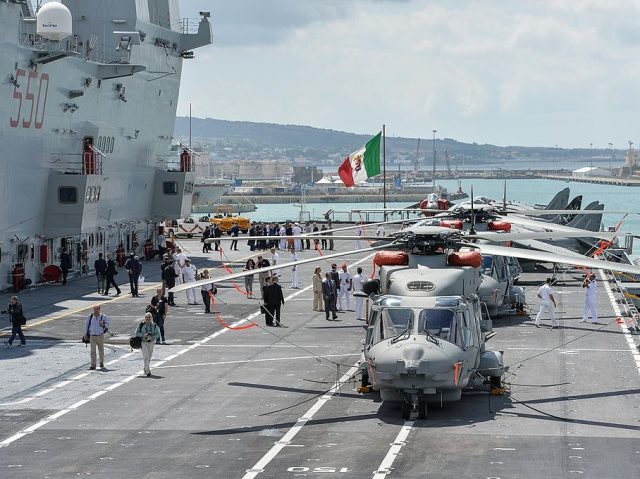
Harrier jets and helicopters are parked on the flight deck of the Italian navy’s aircraft carrier “Cavour” in the Civitavecchia harbour on July 8, 2014. (ANDREAS SOLARO/AFP via Getty Images)
Even with China’s advances, the U.S. has far more carriers and vastly more strike capability, plus much greater experience in using it. Add in the carrier strike groups of NATO allies – and you can add them in, as they have been practicing interoperability in joint drills – and Western superiority in aircraft carrier power projection is secure for some time to come – quite possibly until everyone gets nervous about using carriers at all, thanks to the proliferation of missiles and drones that can kill them.
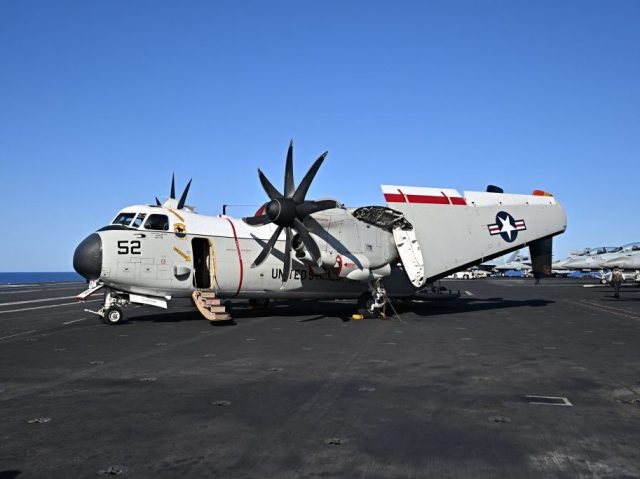
Crew members of US Nimitz-class nuclear-powered aircraft carrier USS Harry S. Truman, work on Northrop Grumman C2A, of Fleet Logistics Support Squadron, on the flight deck of the ship, during a NATO vigilance activity NEPTUNE SHIELD 2022 (NESH22) on eastern Mediterranean Sea on May 23, 2022. (ANDREAS SOLARO/AFP via Getty Images)
Rand Corporation defense researcher Timothy Heath told Business Insider in 2020 that despite China’s intimidating carrier displays near Taiwan and Japan, the Chinese might not be seriously trying to challenge U.S. carrier dominance. Instead, China is looking to protect its trade routes and oil flow through the Indian Ocean, a region it cannot easily cover with land-based aircraft because it lacks regional bases or allies.
“That’s the real value of these, and it’s worth bearing that in mind when we start to question why they are willing to spend so much money on building carriers with limited air capacity. For that mission, it may be enough,” Heath said.
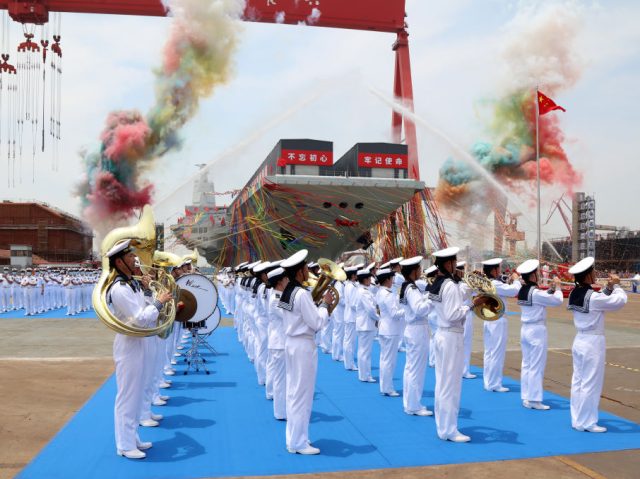
COMMENTS
Please let us know if you're having issues with commenting.